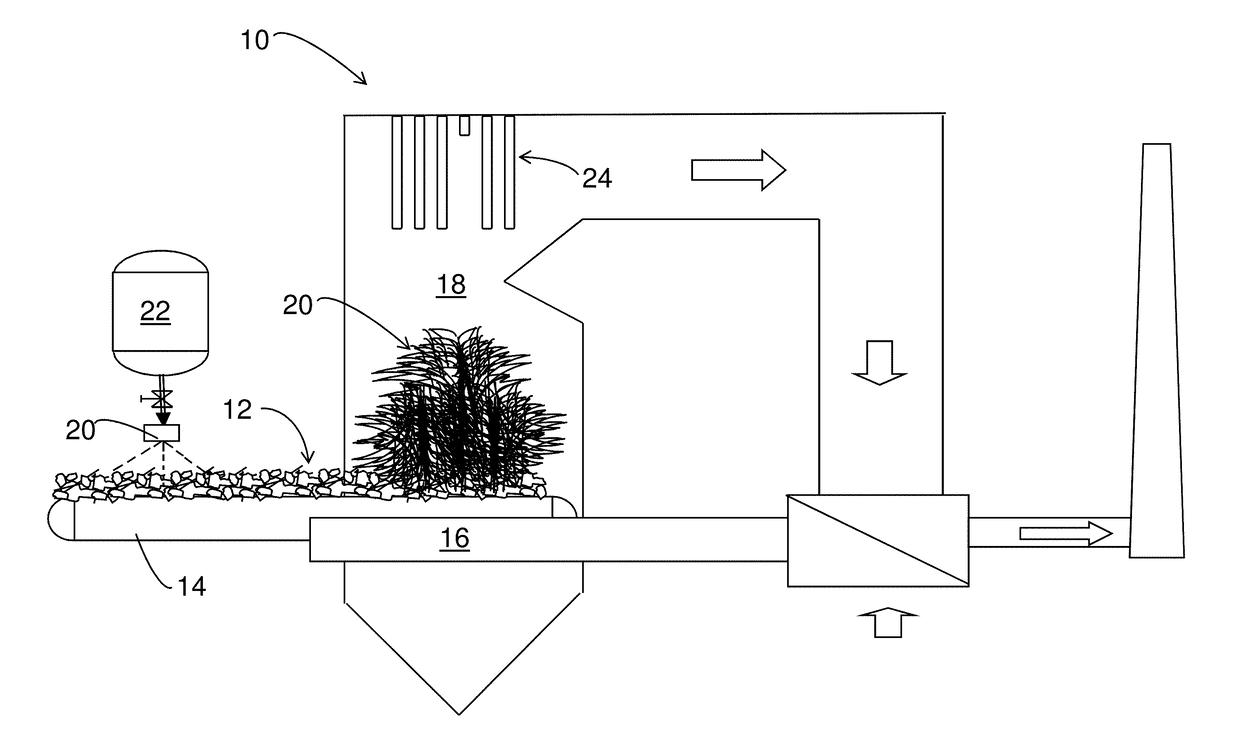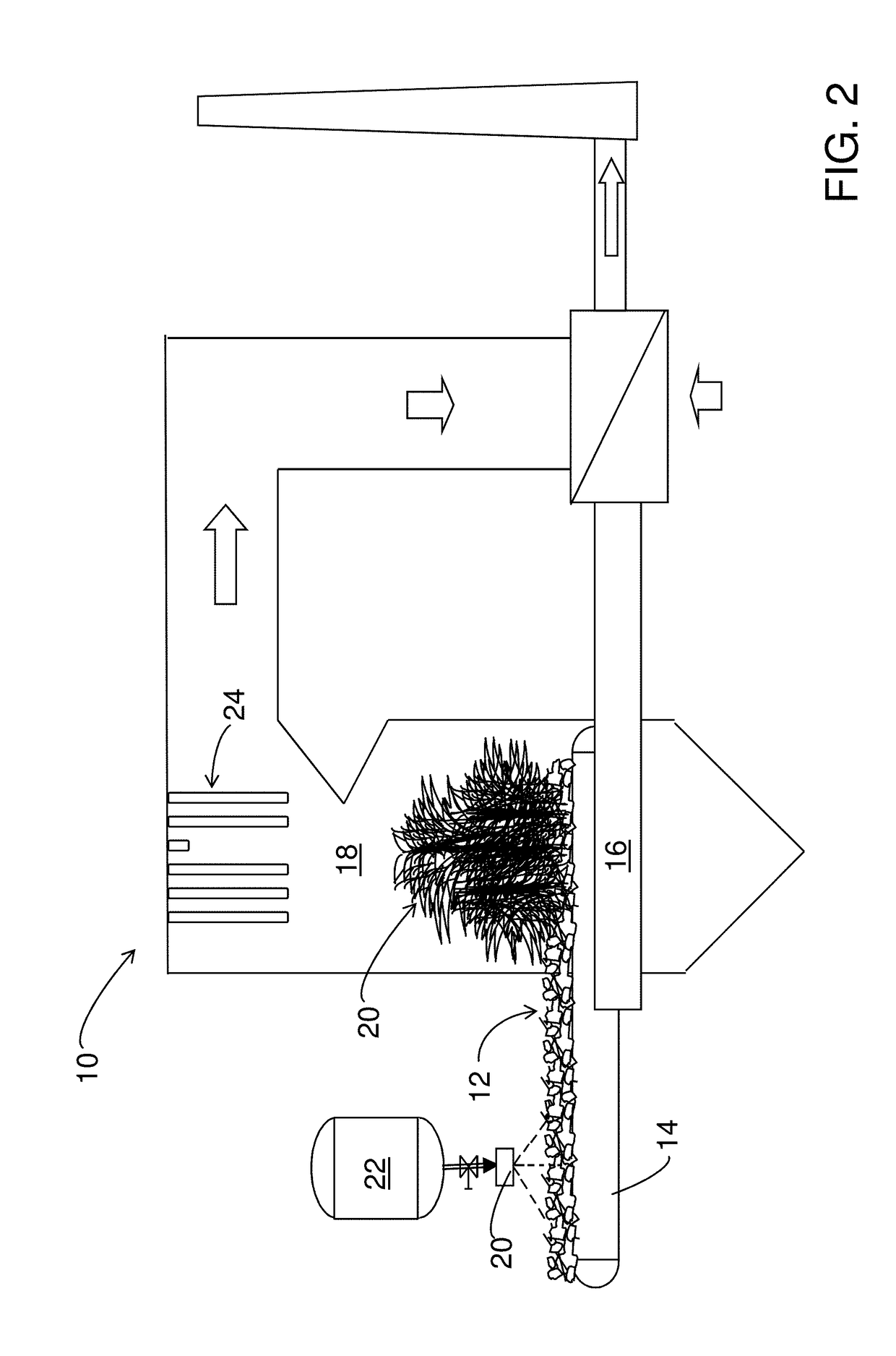Controlling Slagging and/or Fouling in Furnaces Burning Biomass
- Summary
- Abstract
- Description
- Claims
- Application Information
AI Technical Summary
Benefits of technology
Problems solved by technology
Method used
Image
Examples
example 1
[0037]This example describes the use of the invention to control problems for a manufacturer that uses biomass-based materials to construct specialty wood-based materials and burns waste. Results are described for a prior art process and that of the invention.
[0038]Waste including residual material (sawdust) along with other biomass waste and woody biomass materials are fed to a furnace to generate hot gases that are used in the manufacturing process. The furnace is a bubbling bed type that utilizes a floating suspended bed in the bottom consisting of fine rock and coarse sand about a quarter inch in diameter. Various fuel streams are conveyed or blown into the furnace both into the bed and above the bed. Firing the furnace to produce gas for process causes fouling in the small heat exchangers, which can readily be cleaned. The problem is the bed material gets coated with condensed potassium and sodium vapors due to fluctuating temperatures as part of the process. The bed agglomerat...
PUM
 Login to View More
Login to View More Abstract
Description
Claims
Application Information
 Login to View More
Login to View More - R&D Engineer
- R&D Manager
- IP Professional
- Industry Leading Data Capabilities
- Powerful AI technology
- Patent DNA Extraction
Browse by: Latest US Patents, China's latest patents, Technical Efficacy Thesaurus, Application Domain, Technology Topic, Popular Technical Reports.
© 2024 PatSnap. All rights reserved.Legal|Privacy policy|Modern Slavery Act Transparency Statement|Sitemap|About US| Contact US: help@patsnap.com










